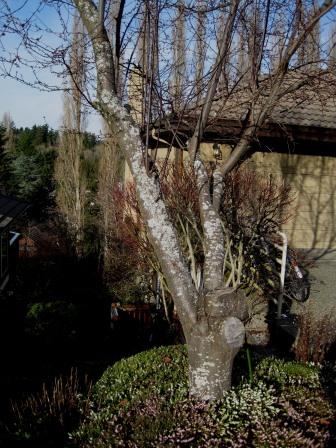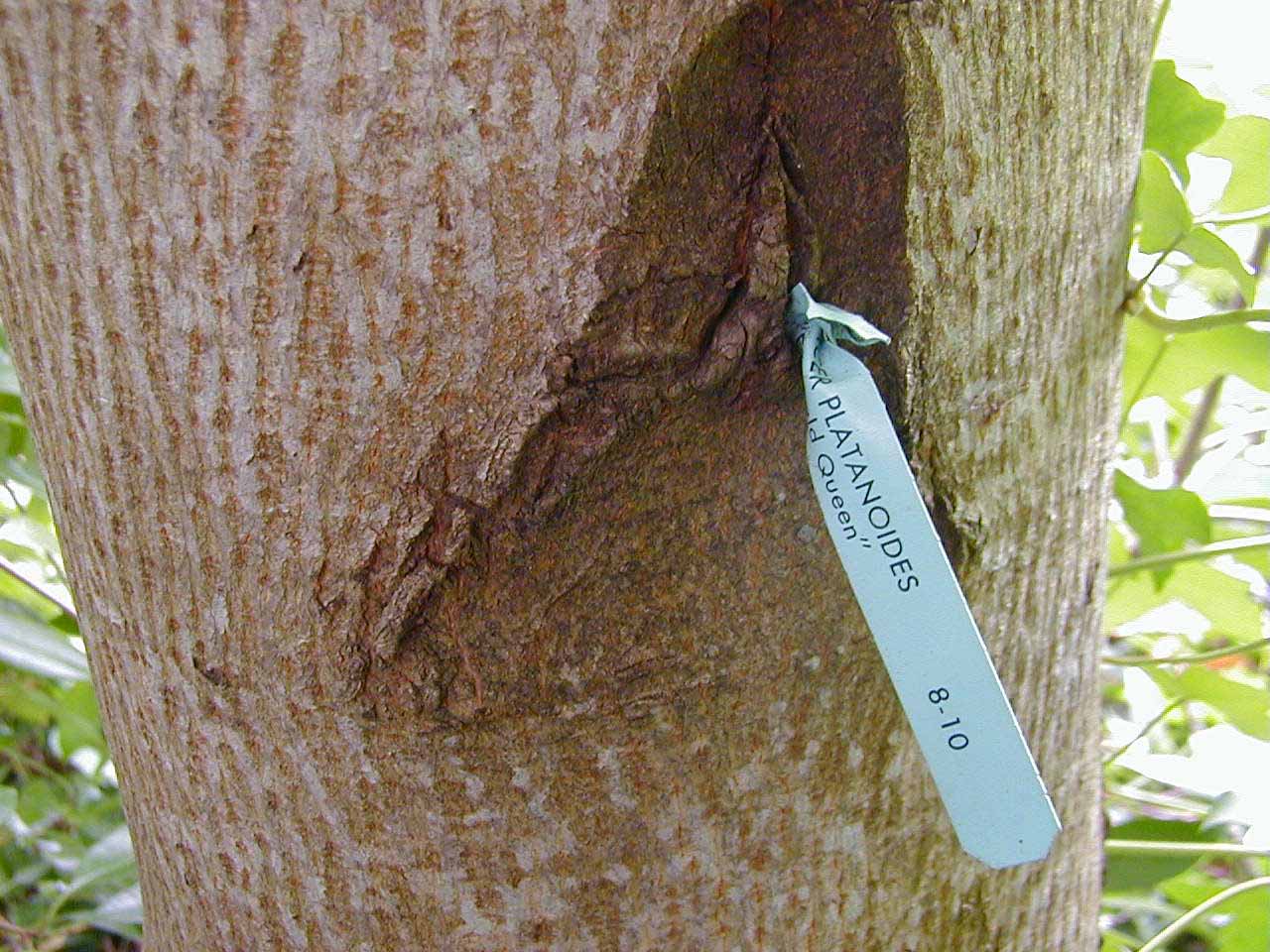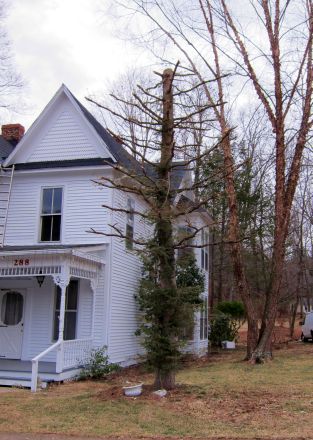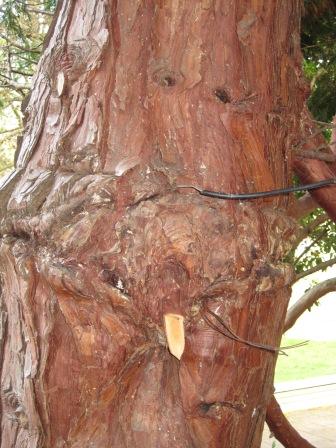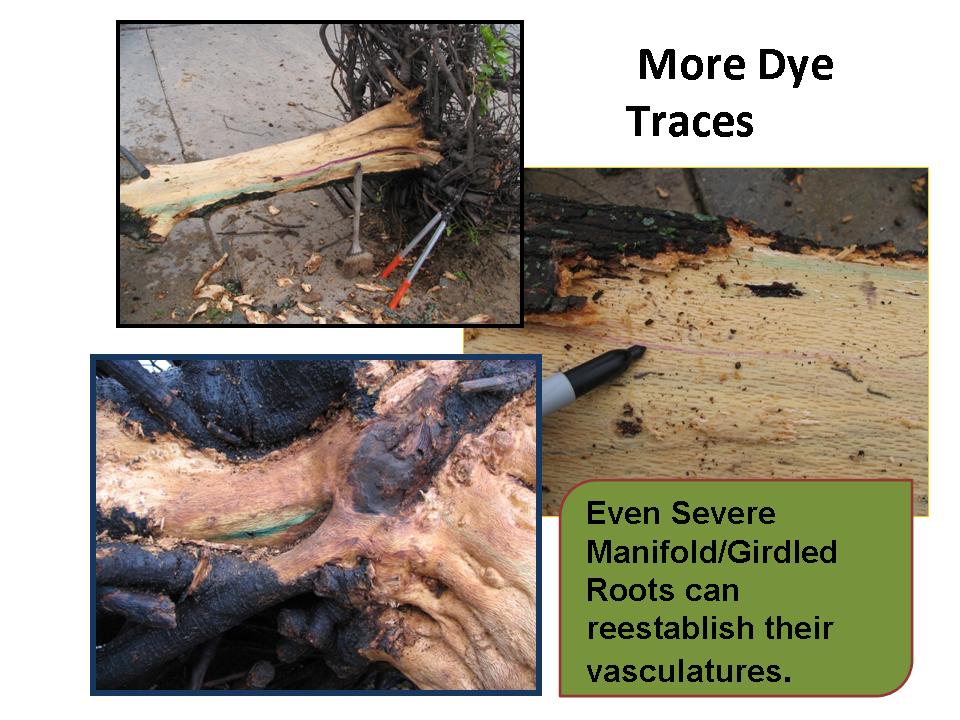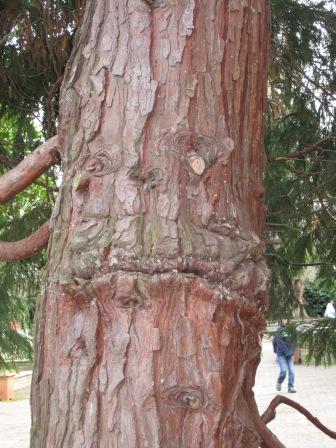 One of the most widely discussed topics in arboriculture and tree care these days is the problem of girdling roots. Virtually every conference or workshop on tree care has a speaker or speakers on how poor planting technique or poor nursery practices lead to girdling roots and their subsequent correlation with poor tree performance, tree failures, global warming, the soaring Federal budget deficit, and the batting average of the Seattle Mariners. Before we go any further let me state categorically that I do not think girdling roots are a good thing; nor do I think any of the consequences mentioned are a laughing matter – especially the Mariners’ batting average. I do think, however, that we often see a rush to judgment as soon as girdling roots are found on trees that are declining or have died. I attribute at least part of this to the increased availability of air spades for excavating tree roots. I have nothing against air spades; they are useful tools and a great way to non-destructively examine and treat roots and even move trees. The problem is that often when people see a tree in decline they examine the roots, see a girdling root, conclude that was the problem and blame the person that planted the tree (unless they were the person that planted the tree, then they blame the nursery).
One of the most widely discussed topics in arboriculture and tree care these days is the problem of girdling roots. Virtually every conference or workshop on tree care has a speaker or speakers on how poor planting technique or poor nursery practices lead to girdling roots and their subsequent correlation with poor tree performance, tree failures, global warming, the soaring Federal budget deficit, and the batting average of the Seattle Mariners. Before we go any further let me state categorically that I do not think girdling roots are a good thing; nor do I think any of the consequences mentioned are a laughing matter – especially the Mariners’ batting average. I do think, however, that we often see a rush to judgment as soon as girdling roots are found on trees that are declining or have died. I attribute at least part of this to the increased availability of air spades for excavating tree roots. I have nothing against air spades; they are useful tools and a great way to non-destructively examine and treat roots and even move trees. The problem is that often when people see a tree in decline they examine the roots, see a girdling root, conclude that was the problem and blame the person that planted the tree (unless they were the person that planted the tree, then they blame the nursery).

Example of oak tree with leaf scorch (Photo Phillip Kurzeja)
A recent study here at Michigan State presented by Phillip Kurzeja at the recent Arboriculture Society of Michigan ArborCon, points out the importance of looking beyond girdling roots in assessing tree problems.
The problem: Oak trees at several locations on the MSU campus have been suffering severe leaf scorch. In some cases virtually 100% of the leaves on the trees are affected and growth has been severely affected. Examination of the trees by a pathologist ruled out bacterial leaf scorch, suggesting that the problem may be abiotic. The researchers looked at a battery of variables including degree of leaf scorch, number of girdling roots, planting depth, soil compaction, foliar nutrition, leaf water potential, and leaf photosynthetic function. Most importantly, they looked at these traits on trees without scorch as well as trees with scorch.

Evaluating girdling roots (Photo Phillip Kurzeja)
The results: Trees with mild or severe scorch leaf scorch had girdling roots. At this point one might have leapt to the conclusion that the girdling roots were responsible for the leaf scorch. But girdling roots were also found in trees that did not have any leaf scorch. In fact, in some cases the healthy trees had more severe girdling roots than trees with the worst leaf scorch. So, what factors differed between trees with scorched and un-scorched leaves? The researchers are still working on the analyses but the most obvious differences were that trees with leaf scorch were consistently planted deeper and had lower levels of foliar manganese than healthy trees.
The presentation I saw did not include data on soil pH or soil nutrient levels, so it’s impossible at this point to establish causal relationships among planting depth, foliar manganese, and leaf scorch. But, for those who have to answer the ‘what’s wrong my tree?’questions, this study does point out the importance of keeping an open mind and looking at a variety of factors and not leaping on the first defect to appear.

